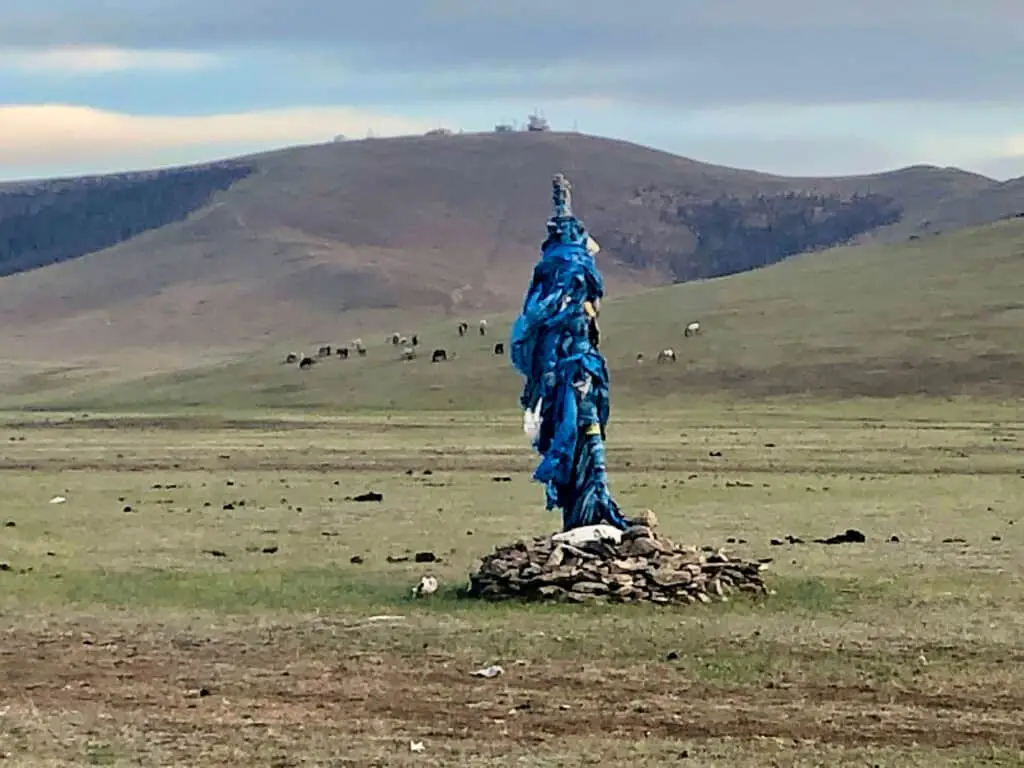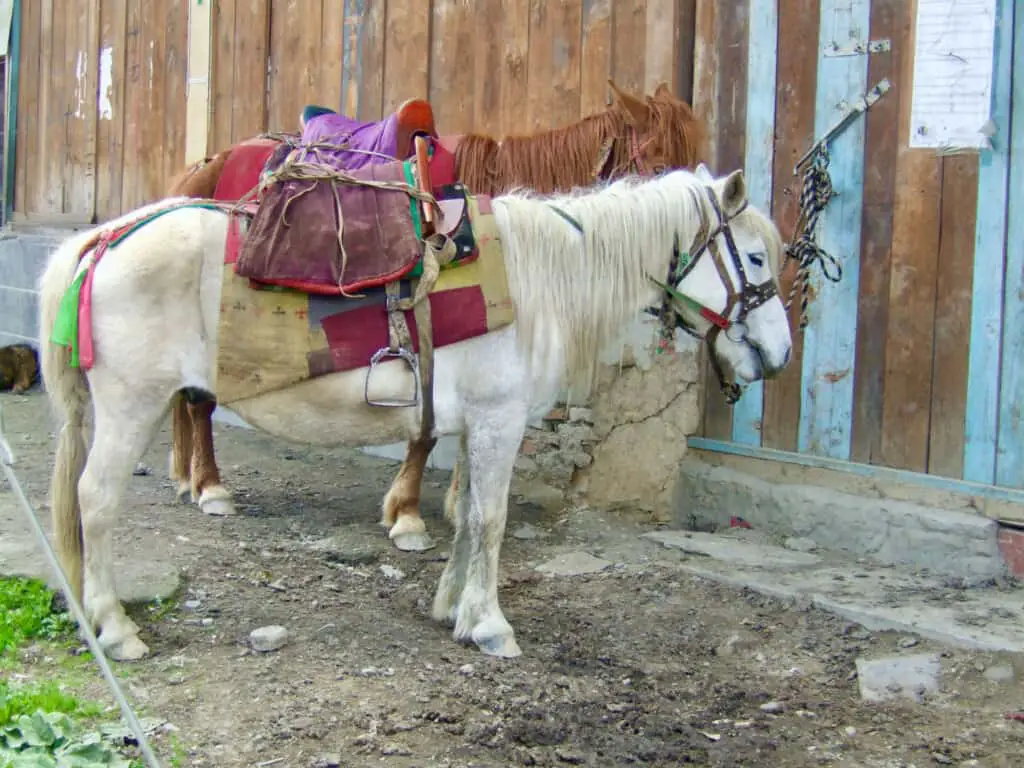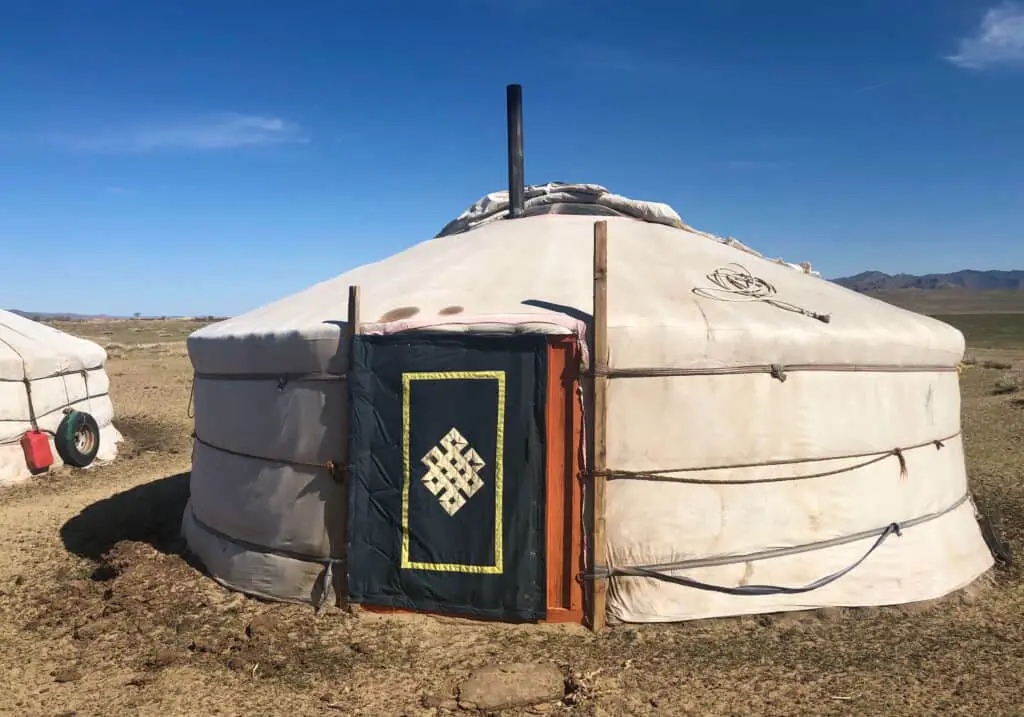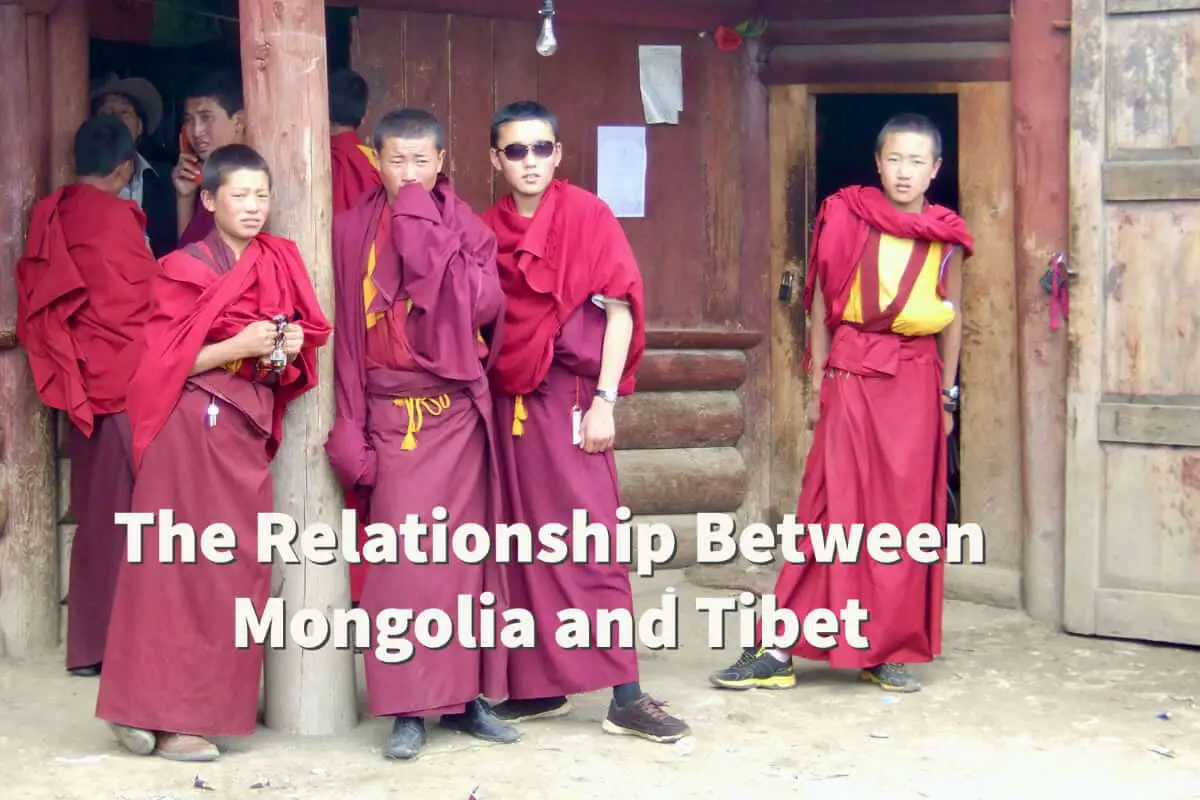I have traveled to both Mongolia and Tibet. Even though these countries are far apart, they have still many similarities. Both Tibet and Mongolia practice the same form of Buddhism.
The relationship between Mongolia and Tibet started in the mid-1200s when the Genghis Khan army invaded Tibet. The Tibetans taught their capturers Buddhism and later went to Mongolia to convert many Mongolians to Tibetan Buddhism. In 1913, Mongolia and Tibet signed a treaty.
Table of Contents

The Relationship Between Mongolia and Tibet
Mongolia and Tibet’s relationship started in the mid-1200s, and their close cultural and economic relationship continued for many centuries. In 1913 a treaty of friendship and alliance was signed between the government of Mongolia and Tibet.
Even though there have been some doubts about the Tibetan signature’s authority on the 1913 treaty, it still is considered a valid international treaty. In 1982 and again in 2007, the original copy of this Tibetan document was published in Mongolia.
The relationship between Mongolia and Tibet started way before the 1913 treaty. Tibet and Mongolia declared their independence from China; they felt more of an alliance with each other than their common neighbor of China.
The Tibet and Mongolian alliance was a normal evolution in that both countries have very similar lifestyles, though in completely different regions. Both the Tibetans and Mongolians have a nomadic lifestyle.
I have been to both Tibet and Mongolia; when you travel to each place, one of the things you stand out for is in the countryside of both places. Yurts (Gers) dot the land. Even today, both countries have many nomadic herders.
In Tibet, one of the most important animals for the nomadic herds is the Yak, but some nomads also have sheep and goats. The horse is also important for Tibetan herders.
Mongolia is also very similar. The Nomads will have horses, camels, sheep, and goats. Some will also have yaks.

In both places, Buddhist prayer flags dot the land. In Tibet, the prayer flags are flying in the wind. In Mongolia, I saw most of the prayer flags on a larger pole.
From what I observed, the Tibetan and Mongolian lifestyles had many similarities. This is because the same predominant religion joins the two countries.

Genghis Khan Invades Mongolia
The mighty army of the Mongolian ruler Genghis Khan invaded Mongolia in the 1200s. Some say the first invasion was in 1206, and others in 1240; scholars differ exactly when the attack happened.
If you want to learn more about Genghis Khan, you can read Mongolia’s Genghis Khan Statue: Mongolia’s Love for Genghis Khan by clicking here.
The Tibetans pledged an alliance with the Mongolian forces in the story of the 1206 invasion. In the 1240 account, the Mongol forces were commanded by the Mongol Prince Koton.
In about 1244, the Tibetan Buddhist Master Sakya Pandita Kunga Gyaltsen and his nephew Phagpa went to the camp where Prince Koton was. During this time, they discussed Buddhism with the Mongolian authorities to persuade them to have a favorable view of Buddhism.
Master Sayka and his nephew Phagpa were outstanding missionaries who converted the Mongol nobility to Tibetan Buddhism. From then on, Tibetan Buddhist thought began to influence much of the Mongol nobility.
In speaking of this, Mongolian Crown Prince Ayurshridara is said to have said this about the Chinese Confucian teachings and Tibetan Buddhism:
“A Chinese scholar taught me the Confucian classics for years but the meaning is still not too clear to me. Now I am hearing the Law of the Buddha from Hsifan (Tibetan) monk, and I am enlightened after only one night.”
Sechin Jagchid
This shows how quickly the Mongolians were able to accept Tibetan Buddhism. Many scholars believe that this is because they could relate to the nomadic Tibetan lifestyle that was so similar to their own.

Mongolia, Tibet And Buddhism
We are not sure why the Mongolians took it so quickly to Tibetan Buddhism, but Tibetan Buddhism is powerful in Mongolia, even today. Tibet and Mongolia have many cultural and l lifestyle similarities, especially the nomadic lifestyle.
In writing about the Tibetan and Mongolian similarities, Sechin Jagchid wrote this about their mutual choice of religion:
“The Mongolian Khan’s choice of this religion seems to have been based on cultural similarities between the Mongols and the Tibetans, and their mutual distance-geographical and cultural–from the Chinese. Both Mongolia and Tibet are high plateaus of Inner Asia, and their open steppes and cold, arid climate make them well-suited to nomadism. On account of similarities in their geographic circumstances, both Tibet and Mongolia developed a similar cultural style: Nomadic pastoralism. It was thus, easier for the Mongols to mingle with seminomadic Tibetans than with purely agricultural Chinese, who were far different in their social and cultural institutions.”
Sechin Jagchid
The Tibetan Buddhist missionary work in Mongolia lasted for hundreds of years, with many Tibetan scholars coming to Mongolia; they converted many Mongolians to Tibetan Buddhism. This religious alliance lasted for many years, with the Mongolians playing a role in establishing the Dalai Lama.
This preaching of Tibetan Buddhists spread all over Mongolia and even into Manchurian parts, with many of the Manchu people also converting to Tibetan Buddhism. Tibetan Buddhism has greatly influenced Mongolia and Tibet for many centuries.
The relationship between Tibet and Mongolia started with the Mongolians going to Tibet to conquer Tibet. Their relationship continued, with many Tibetans going to Mongolia to convert the Mongolians to Tibetan Buddhism.
At A Bus On A Dusty Road, we discuss travel, life, and ex-pat living. We are all about “Living Life As A Global Citizen.” We explore social, cultural, and economic issues and travel.
We would love to have you be part of our community. Sign up for our newsletter to keep up-to-date by clicking here. If you have any questions, you can contact me, Anita, by clicking here.
Listen to our Podcast called Dusty Roads. You can find it on all major podcast platforms. Try out listening to one of our podcasts by clicking here.
Subscribe to our A Bus On A Dusty Road YouTube Channel filled with great videos and information by clicking here.
Related Questions
Mongolia Vs. Inner Mongolia: What Is The Difference?
Mongolia is an independent country that gained full independence when the Soviet Union dissolved in 1990. Inner Mongolia, also known as the Autonomous Region of Mongolia, is part of China. The people who live in Inner Mongolia are considered Chinese citizens. In contrast, the people who live in Mongolia are considered Mongolian citizens. Even if they may speak the same language and have a similar culture, they are two different countries.
You can learn more by reading Mongolia Vs Inner Mongolia: What Is The Difference? by clicking here.
How Long Has Mongolia Been A Country?
In 1911 Mongolia broke from Chinese rule; in 1921, the socialist People’s Republic of Mongolia was formed. The People’s Republic of Mongolia was a satellite state of the Soviet Union. When the Soviet Union broke apart in 1989, Mongolia’s fate again changed. In 1990, Mongolia, an independent and democratic country, was formed; its official name is Mongol Uls.
You can discover more by reading How Long Has Mongolia Been A Country? by clicking here.



One response to “What Is The Relationship Between Mongolia And Tibet?”
Thank you for your sharing. I am worried that I lack creative ideas. It is your article that makes me full of hope. Thank you. But, I have a question, can you help me? https://accounts.binance.com/ph/register?ref=OMM3XK51